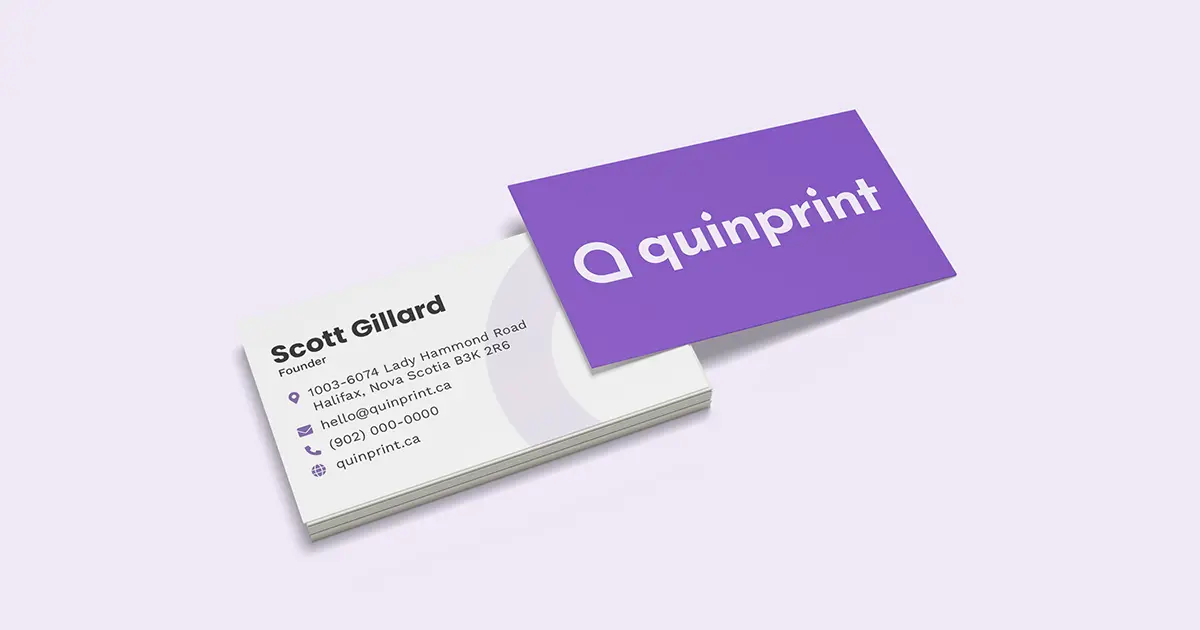
How to Design for Print and Get Amazing Results
Before you hit “send” to your friends over here at Quinprint, there are a few steps to ensure your project is “print-ready.” In this post we share some key features on how to design for print

A saddle stitch booklet is one of the most common, cost-effective, and versatile binding styles in printing. You’ve seen it everywhere — event programs, product catalogs, community newsletters, and company brochures. But what actually makes a booklet “saddle stitched,” and why does it matter for design and production?
In simple terms, a saddle stitch booklet is created by folding printed sheets in half and stapling them along the fold line. Those metal staples, sometimes called wire stitches, hold the pages securely together. The booklet then opens flat for easy reading. It’s ideal for smaller page counts and short-to-medium runs, offering a polished look without the cost or bulk of perfect binding.
At Quinprint, we produce thousands of saddle stitch booklets each year for local businesses, schools, and organizations. Understanding the format helps you plan your project correctly — saving time, avoiding surprises, and ensuring a professional finish.
One of the most common technical questions we hear is: Why does the page count have to be divisible by four?
Here’s why. Each sheet of paper in a saddle stitch booklet becomes four pages when folded — front and back, left and right. For example, if you print on both sides of a single sheet and fold it in half, you end up with four distinct numbered pages.
That means a standard booklet might have 8, 12, 16, 20, or 24 pages — but never 10 or 22. If your design ends up at an odd number, you’ll need to add blank pages or consolidate content.
This “rule of four” affects layout, file setup, and printing costs. When designing your booklet, always confirm your final page count before sending files to print. At Quinprint, our team double-checks your artwork to make sure your booklet is properly paginated and ready for production.
Another key decision is whether your booklet will be self-cover or plus cover (sometimes called a separate cover).
A self-cover booklet uses the same paper weight for both the inside pages and the cover. This gives a smooth, uniform feel throughout. Self-cover is popular for programs, newsletters, and information booklets where flexibility and cost efficiency matter most.
A plus cover booklet uses heavier paper for the outer four pages — essentially a sturdier shell around lighter inside pages. This approach offers a more premium look and improved durability. For product catalogs, tourism guides, and event materials that will be handled repeatedly, a plus cover is a great choice.
Choosing between self-cover and plus cover affects pricing, mailing weight, and the overall impression of your booklet. Our team helps you compare samples so you can see and feel the difference before ordering.
Paper selection defines how your booklet feels and performs. Quinprint offers a wide range of stocks suited for saddle stitch binding, each creating a distinct result.
Gloss Text (60 lb, 80 lb, or 100 lb):
Gloss paper delivers bright colour reproduction and a smooth, professional finish. It’s ideal for product catalogs, event programs, or marketing materials where photos and graphics need to shine. A 100 lb gloss text self-cover creates a crisp, vibrant booklet that still folds neatly.
Matte or Silk Text:
Matte stocks reduce glare and offer a softer appearance, making text-heavy documents easier to read. They’re perfect for reports, newsletters, and lookbooks. Matte finishes also pair beautifully with a heavier glossy or matte card cover for contrast.
Card Stock Covers (80 lb or 100 lb cover):
If you choose a plus-cover configuration, you can upgrade to card stock for the outer pages. A 100 lb gloss or matte cover instantly gives your booklet more structure and weight, ideal for professional presentations or retail displays.
Uncoated Text Stocks:
For a natural, tactile finish — often preferred for sustainability or artistic reasons — uncoated paper offers a modern, understated feel. Many local businesses use uncoated stocks for programs, nonprofits, or educational materials where readability and texture are priorities.
Each paper type affects not only the look but also how ink absorbs, how the booklet folds, and how well it holds up to handling. Our Halifax print specialists guide you through these choices so your saddle stitch booklet delivers exactly the right feel for its purpose.
Understanding the details behind saddle stitch printing ensures your project comes together smoothly. Whether you’re printing 25 copies for an event or thousands for distribution, saddle stitching remains the go-to solution for clean, professional, and cost-efficient booklets.
From paper selection to layout and finishing, Quinprint’s local team supports you every step of the way — so your final product looks sharp, reads beautifully, and reflects the quality of your brand.
If you’re planning your next booklet or catalogue and want advice on layout, paper, or pricing, we’re here to help. Visit Quinprint in Halifax or start your order online — we’ll make sure your saddle stitch booklet looks its best.

Before you hit “send” to your friends over here at Quinprint, there are a few steps to ensure your project is “print-ready.” In this post we share some key features on how to design for print

The team got together for a brainstorming session. We started with a simple question: how

At Quinprint, we’ve simplified things by describing our standard paper and card stocks in plain language.

We pair high-quality production with fast print turnaround options designed to fit your timeline and budget, without ever compromising our friendly service.

When it comes to business card thickness there are lots of options. Lots of jargon. But not a lot of clarity.
Be the first to know about deals, promotions, and more. Plus save big on your next online order.